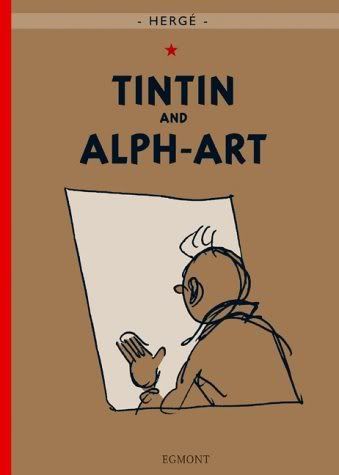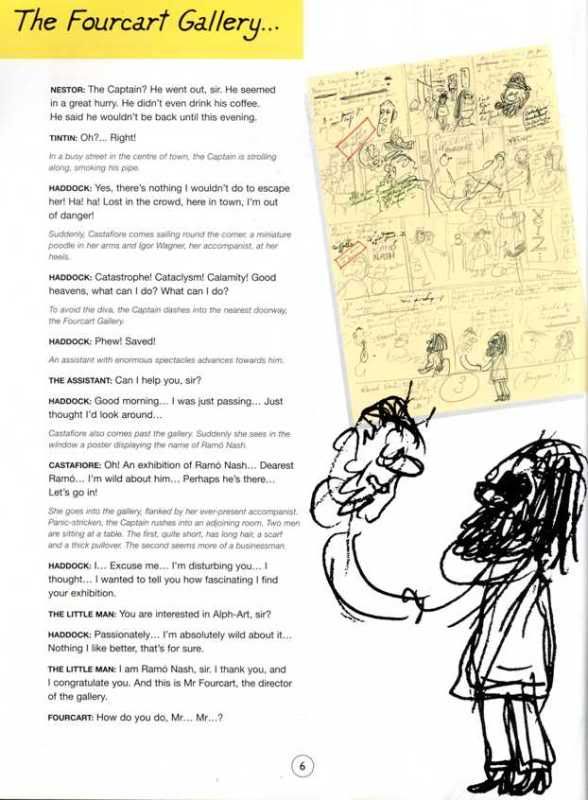
by Herge
translated by Leslie Lonsdale-Cooper and Michael Turner
Egmont, 2004
Herge began his final Tintin album — the 24th — in 1978, and it remained unfinished at the time of his death. This book is kind of a behind the scenes look at his working process. It showcases the work he did complete on it: thumbnails for most of the album (mostly stick-figure doodles really, sometimes just words in a panel), and a dialog script.
Wait. That might not be entirely accurate. It’s unclear from what’s presented how Herge actually worked.
Besides the dialog, there is little in the way of stage direction. One wonders if Herge simply started with the thumbnails and wrote all the stage directions and placeholder dialog straight on them. I say this because some of the directions in the script that’s presented imply they were deducted by this edition’s editors, like: “Enter Thomson and Thompson, the certified detectives” — would Herge really need to tell himself that? But another note later on says: “A footman in livery shows them into an immense reception room where numerous guests are already assembled.” The panel of the stick-figure doodle shows only a door, and the principal characters. There is no description written in the panel itself, implying Herge did indeed write the directions into the script himself to refer to later when he would start pencils. I also noticed some differences between the dialog in the script and that in the thumbnails, suggesting to me that the script came first and he made adjustments afterwards as he worked on the thumbnails. Was it some combination of both?
In the very earliest pages, we get the thumbnails and early pencil roughs as well. I found these particularly interesting as you can see where he had to change page breaks to accommodate larger panels for more complex compositions than he initially predicted he would need. More of this would have been nice, but that’s a ridiculous thing for me to ask, since he probably didn’t do any more! The thumbnails are fine and dandy, but they were never intended for public consumption and you’re not going to get any sense of Herge’s genius for page design from them. (Though it’s remarkable how easily he captures facial expressions and body language with such elementary doodles.)
The book is handsomely designed, with script facing corresponding thumbnails on each page, and certain doodles blown up to massive size to decorate the spreads. I liked the shiny gold cover too. There is also some interesting supplementary material in the back showing Herge’s early attempts at working out the plot line.
Which reminds me, I should actually say something about the story, in which Tintin investigates the suspicious deaths of two fine art experts. The conceit should be ripe for a critique of modern art, but — at least at the script level — this somehow falls flat. Perhaps in the finished art, which could visualize the artworks discussed, the satire would be sharper. It makes it almost impossible to criticize.
Oddly, I felt the best thing about the story is that it remains unfinished at both script and thumbnail stage. A thug marches Tintin off at gunpoint to be encased in liquid polyester and sold to a museum as a forged sculpture, his dead body forever unknown to be inside. The End. It’s bizarrely existential.
All in all, it’s an interesting book but an unsatisfying one — not because of the incompleteness of the story or art, which is to be expected; but because the editors don’t give us enough insight into how Herge was actually working. Of course, their objective was likely to satisfy readers craving another Tintin adventure without any frills, not to satisfy those of us more interested in how the machinery was actually put together.
KS

————————————————————————————-
Kumar Sivasubramanian is the writer of Weird Crime Theater.
